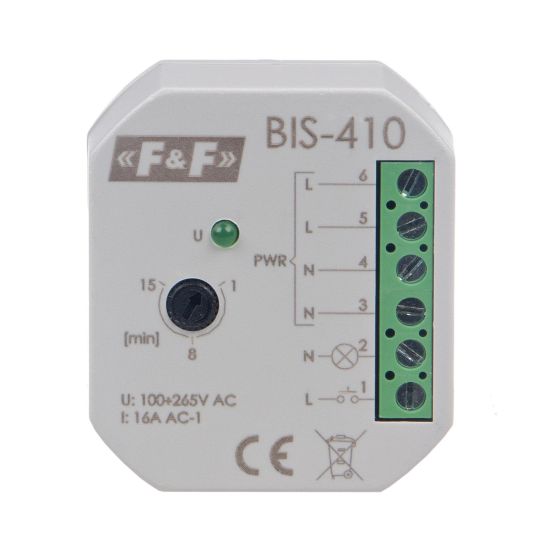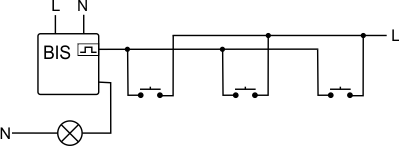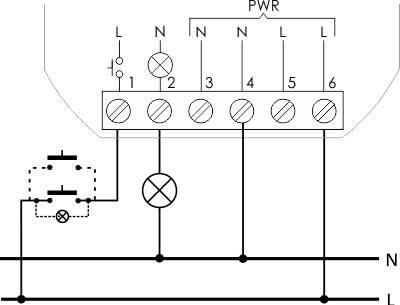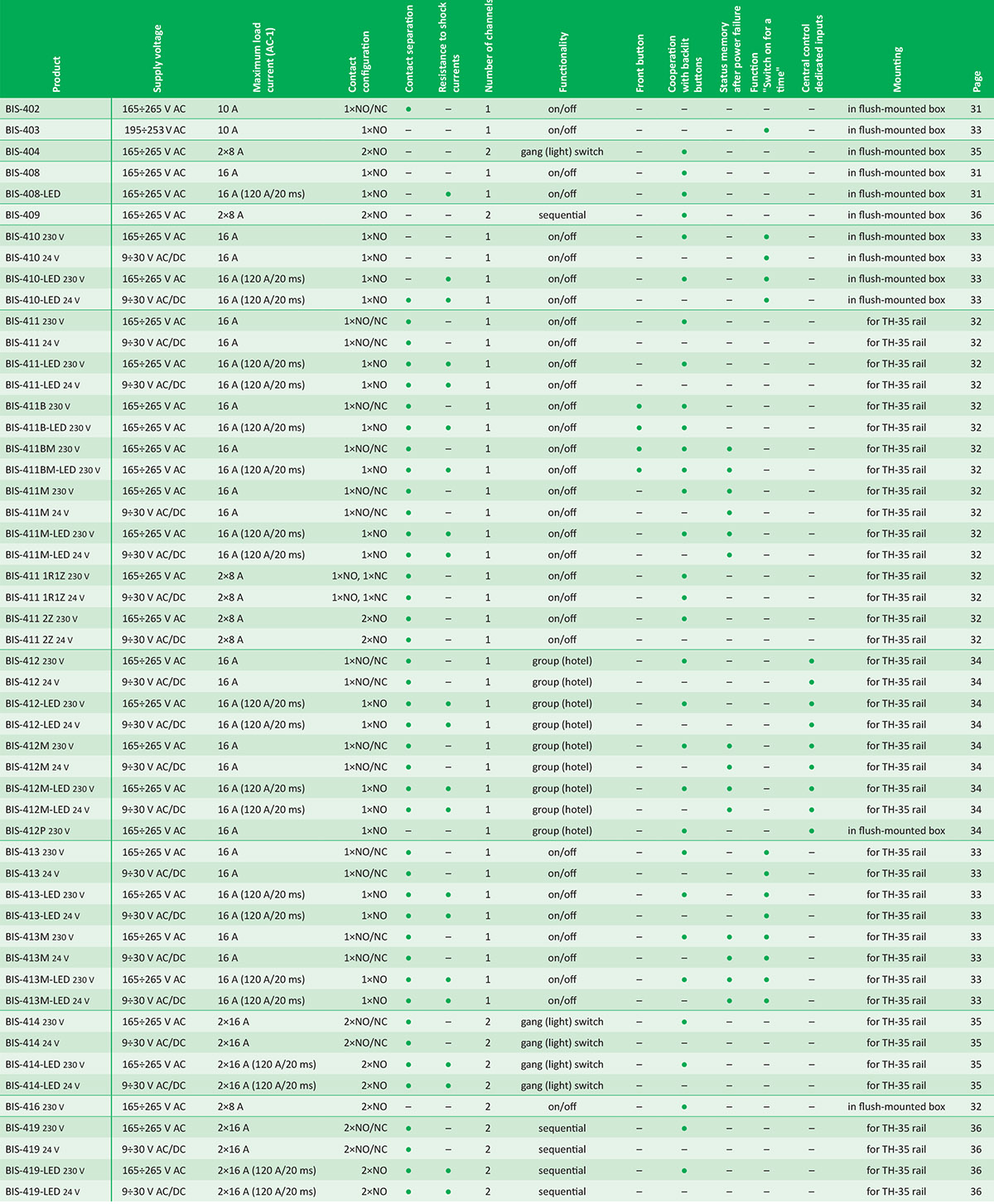






Functioning
The receiver is followed by current pulse triggered by pressing any (bell) connected to the relay. Turning off the receiver will be the next pulse or automatically turn off after a preset time. Longer duration (minimum 2 seconds) pressing the relay instantaneous permanently. It will cut out after a momentary button is pressed again (or after a power failure).

Note!
BIS-410 and BIS-410i can be used with illuminated buttons. ![]()
Power table

The above data are indicative and will depend to a large extent on the design of a specific receiver (especially for LED bulbs, energy saving lamps, electronic transformers and pulse power supplies), switching frequency and working conditions.

